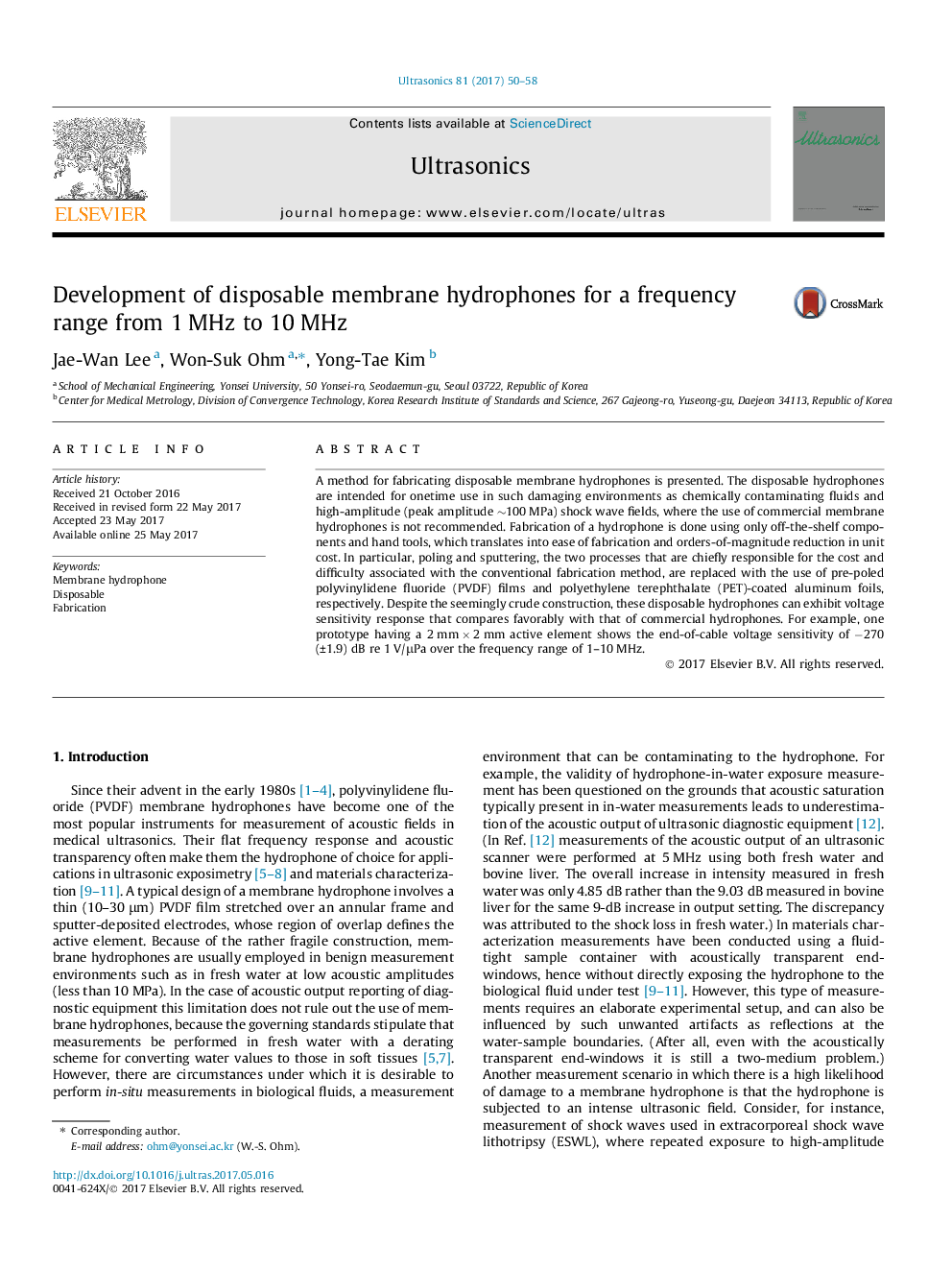| Article ID | Journal | Published Year | Pages | File Type |
|---|---|---|---|---|
| 5485393 | Ultrasonics | 2017 | 9 Pages |
Abstract
A method for fabricating disposable membrane hydrophones is presented. The disposable hydrophones are intended for onetime use in such damaging environments as chemically contaminating fluids and high-amplitude (peak amplitude â¼100 MPa) shock wave fields, where the use of commercial membrane hydrophones is not recommended. Fabrication of a hydrophone is done using only off-the-shelf components and hand tools, which translates into ease of fabrication and orders-of-magnitude reduction in unit cost. In particular, poling and sputtering, the two processes that are chiefly responsible for the cost and difficulty associated with the conventional fabrication method, are replaced with the use of pre-poled polyvinylidene fluoride (PVDF) films and polyethylene terephthalate (PET)-coated aluminum foils, respectively. Despite the seemingly crude construction, these disposable hydrophones can exhibit voltage sensitivity response that compares favorably with that of commercial hydrophones. For example, one prototype having a 2 mm Ã 2 mm active element shows the end-of-cable voltage sensitivity of â270 (±1.9) dB re 1 V/μPa over the frequency range of 1-10 MHz.
Related Topics
Physical Sciences and Engineering
Physics and Astronomy
Acoustics and Ultrasonics
Authors
Jae-Wan Lee, Won-Suk Ohm, Yong-Tae Kim,
